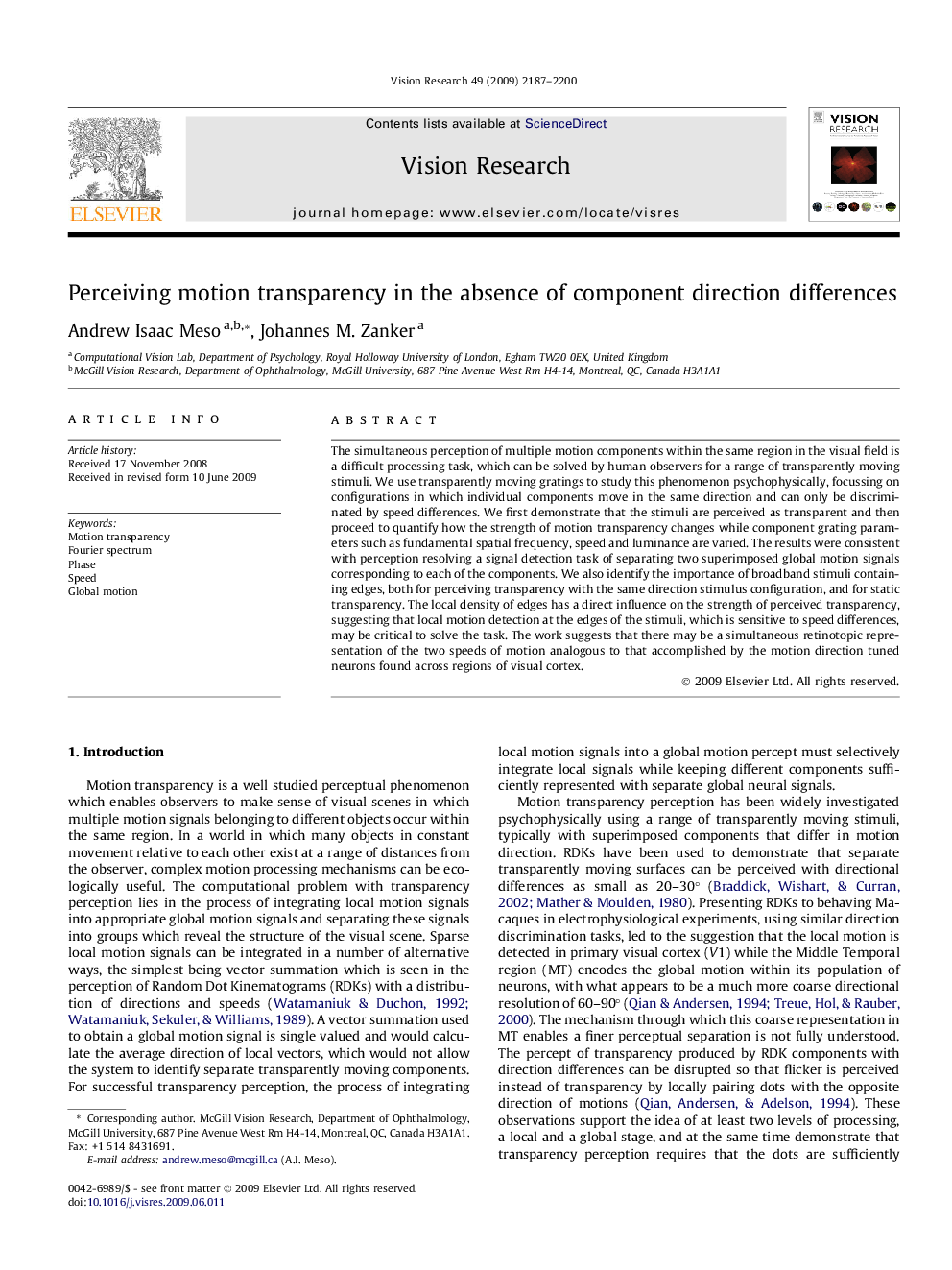| Article ID | Journal | Published Year | Pages | File Type |
|---|---|---|---|---|
| 4035118 | Vision Research | 2009 | 14 Pages |
The simultaneous perception of multiple motion components within the same region in the visual field is a difficult processing task, which can be solved by human observers for a range of transparently moving stimuli. We use transparently moving gratings to study this phenomenon psychophysically, focussing on configurations in which individual components move in the same direction and can only be discriminated by speed differences. We first demonstrate that the stimuli are perceived as transparent and then proceed to quantify how the strength of motion transparency changes while component grating parameters such as fundamental spatial frequency, speed and luminance are varied. The results were consistent with perception resolving a signal detection task of separating two superimposed global motion signals corresponding to each of the components. We also identify the importance of broadband stimuli containing edges, both for perceiving transparency with the same direction stimulus configuration, and for static transparency. The local density of edges has a direct influence on the strength of perceived transparency, suggesting that local motion detection at the edges of the stimuli, which is sensitive to speed differences, may be critical to solve the task. The work suggests that there may be a simultaneous retinotopic representation of the two speeds of motion analogous to that accomplished by the motion direction tuned neurons found across regions of visual cortex.
